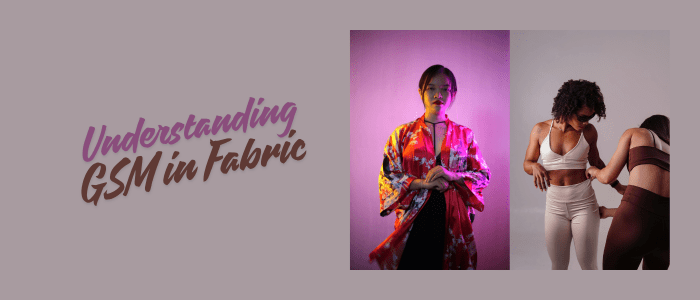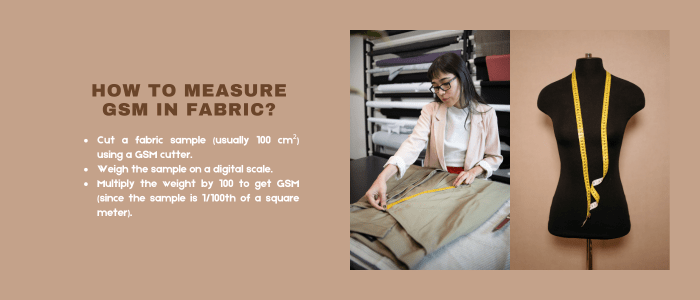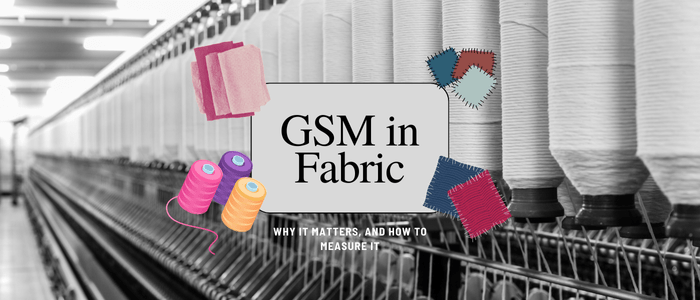When building a clothing brand, one of the most overlooked yet essential factors is GSM in fabric. GSM stands for “grams per square meter,” which refers to the weight of a fabric. In simple terms, it tells you how heavy or light a fabric is. This measurement plays a big role in how your garment feels, how durable it is, and whether it is suitable for summer, winter, or year-round wear.
Moreover, quality and price rank as the top purchase considerations for 79% of apparel consumers, while features like comfort are highly valued in everyday wear. This highlights that customers not only notice fabric quality but expect it, making GSM selection one of the most critical decisions in apparel design.
For apparel startups, private labels, and established fashion brands, understanding GSM helps you make informed choices about quality, comfort, and cost. Choosing the right GSM ensures your product not only meets customer expectations but also strengthens your brand’s positioning in the market.
Understanding GSM in Fabric: A Guide for Apparel Brands

If you’re building a clothing line, you’ll often hear suppliers and manufacturers talk about GSM in fabric. But what does it mean?
GSM is a standard measurement that indicates the weight of a fabric. In simple terms, it tells you how heavy or light a fabric is. A higher GSM means the fabric is denser and heavier, while a lower GSM means it’s lighter and thinner.
Here are some examples to make it clear:
- 120 GSM T-shirt → feels soft, airy, and perfect for warm climates.
- 350 GSM hoodie → feels thick, structured, and ideal for colder seasons.
For apparel brands, understanding GSM is crucial because it directly affects:
- Fabric performance: Heavier fabrics are often stronger and more durable, while lighter fabrics allow breathability and comfort.
- Garment quality perception: Customers often associate higher GSM with premium quality, even if it’s not always the best choice for every product.
- Seasonal relevance: Choosing the right GSM ensures your collection matches customer expectations for summer wear, winter apparel, or year-round basics.
It’s important to note that a higher GSM doesn’t automatically mean better fabric. The “right” GSM depends on the product category, brand positioning, target audience, and intended use. For instance, a luxury streetwear label might prefer a heavyweight T-shirt for a premium feel, while an activewear brand would go for midweight GSM that balances durability and flexibility.
By understanding fabric GSM meaning and its impact, startups and fashion brands can make smarter sourcing decisions that align with both customer comfort and business goals.
Also check: How to Start Your Own Clothing Line
Why Does GSM Matter for Apparel Manufacturing?
Selecting the correct GSM is crucial for both product performance and brand perception.
Here’s why:
1. Durability & Strength
Higher GSM fabrics are stronger and last longer. Jeans made with 300+ GSM denim can endure heavy use, while lighter fabrics might wear out more quickly.
2. Comfort & Seasonality
A fabric’s weight directly impacts comfort. Lightweight fabrics (120–160 GSM) are perfect for summer T-shirts, while heavier fabrics (280–350 GSM) are preferred for winter hoodies and sweatshirts.
3. Pricing & Production Costs
Fabric weight influences cost. Heavier fabrics typically require more raw material, making them more expensive to produce. Startups and private labels must balance quality with affordability when choosing GSM.
GSM Guide for Apparel Brands: Finding the Right Fabric Weight for Each Product
Choosing the correct GSM in fabric isn’t about following industry standards that match your product vision with customer expectations. For clothing brands and private label businesses, GSM defines how your garments feel, how long they last, and how they are positioned in the market. Below are the most common GSM ranges across popular apparel categories, along with what they mean for your brand.
T-Shirts (120–180 GSM)
- 120–140 GSM: Lightweight, breathable, and perfect for summer wear or promotional T-shirts where affordability is key.
- 150–180 GSM: Midweight fabrics that feel more premium, offering better drape, opacity, and durability. These are often used in retail-quality or luxury basics.
Hoodies & Sweatshirts (280–350 GSM)
- 280–300 GSM: Medium weight, ideal for layering pieces and moderate climates.
- 320–350 GSM: Heavyweight hoodies with structure and warmth, often perceived as premium. Brands targeting colder regions or streetwear markets tend to prefer higher GSM.
Explore: Custom Hoodie Manufacturer
Jeans & Denim (300+ GSM)
- Denim is traditionally heavy-duty, with 300–450 GSM being standard for durability.
- Higher GSM offers stiffness and long-lasting wear, while lighter denim blends (closer to 280 GSM) are increasingly popular in fashion-forward or warmer markets for added comfort.
Activewear & Sportswear (180–250 GSM)
- 180–200 GSM: Lightweight and flexible for running, yoga, or summer workouts.
- 210–250 GSM: Midweight fabrics that balance breathability with compression and support, preferred for performance wear.
These ranges serve as benchmarks, but the right GSM depends on your brand identity, price positioning, and target market preferences. By understanding and applying these GSM ranges strategically, apparel brands can design collections that resonate with their audience while maintaining consistent quality standards.
For example:
- A luxury streetwear label might choose heavier GSM hoodies to signal exclusivity.
- An athleisure brand may opt for midweight activewear fabrics to balance performance with comfort.
- A startup focusing on mass-market T-shirts may prioritize lower GSM to keep production costs competitive.
How to Measure GSM in Fabric?

Measuring GSM is a simple yet precise process.
Tools Needed:
- GSM cutter (to cut fabric samples in a fixed size)
- Digital weighing scale
Step-by-Step Method:
- Cut a fabric sample (usually 100 cm²) using a GSM cutter.
- Weigh the sample on a digital scale.
- Multiply the weight by 100 to get GSM (since the sample is 1/100th of a square meter).
Alternative Method:
If you don’t have a GSM cutter, cut a small piece of fabric (10cm x 10cm), weigh it, and calculate GSM using the formula:
GSM= Fabric weight in grams / Area in square meters
This gives an accurate estimate without specialized tools.
Choosing the Right GSM for Your Clothing Brand
Selecting GSM is not just a technical choice, it’s a branding decision.
Here’s how to approach it:
- Align with brand goals: A luxury label may prefer heavier fabrics (higher GSM) for a premium feel, while budget-friendly lines may opt for lighter GSM to reduce costs.
- Consider climate & usage: For tropical regions, lightweight fabrics are more practical, while colder climates demand heavier weights.
- Know your target market: If your audience prioritizes comfort and breathability, lower GSM may be ideal. If they value structure and durability, higher GSM fabrics will stand out.
By aligning GSM with your vision and market needs, you create products that customers genuinely connect with.
Final Thoughts
GSM in textiles is more than just a number—it’s a key factor that shapes comfort, durability, cost, and customer satisfaction. For apparel startups and established brands alike, understanding GSM means creating garments that truly align with your vision and your market.
Need guidance on choosing the perfect fabric weight for your apparel line?
Contact Argus Apparel – your trusted private label manufacturer in the USA.











